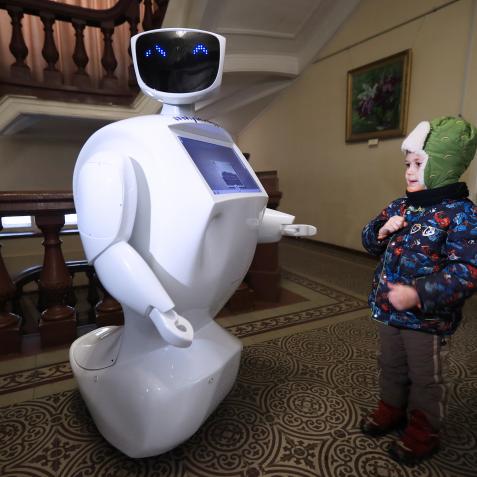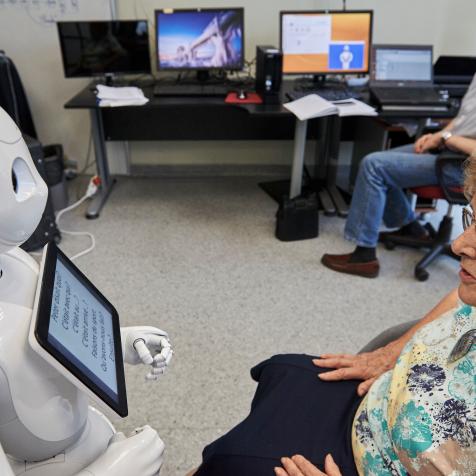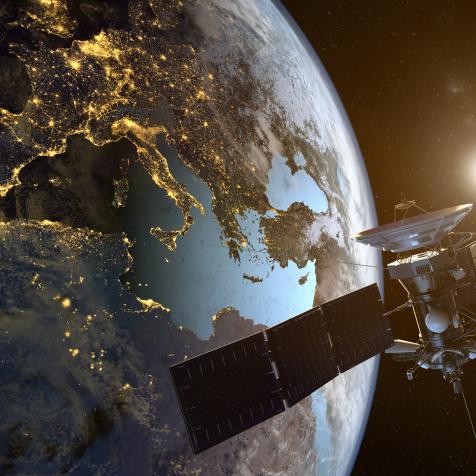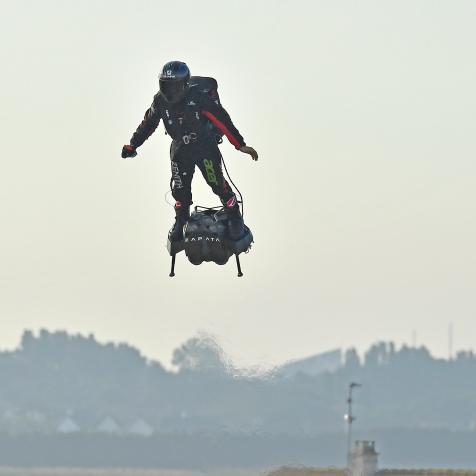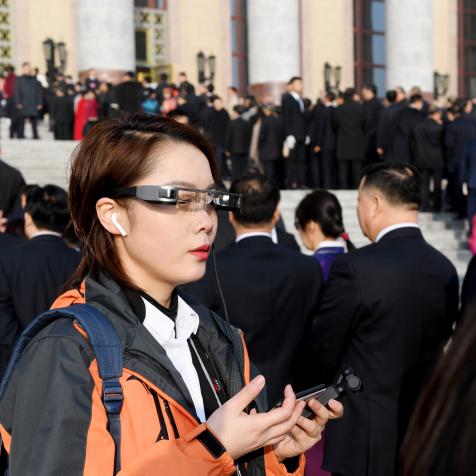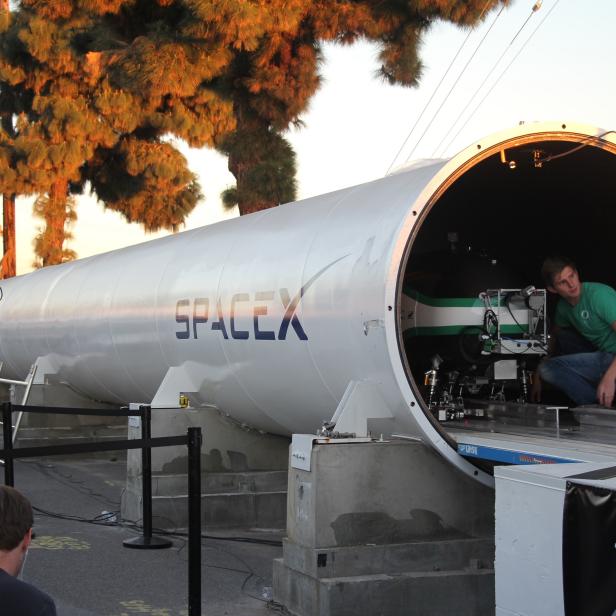
GettyImages/Kate Allen
Hyperloop: How Elon Musk’s Tube Travel Concept Works
Mostly likely, you've heard of the "hyperloop" in passing, but do you know what it is? Here, we explain Musk's vision for linking Earth’s cities using ultra-fast travel pods.
Hyperloop is a concept developed by Space X and Tesla founder Elon Musk for ultra-fast inter-city travel. Using travel pods inside metallic tubes, he calls it as a "fifth mode" of transport in addition to cars, planes, boats, and trains.
The Hyperloop is a high-speed commuter and freight transport system that could reach speeds of around 750 mph (1,210 kph). Musk's initial design was to take people from downtown Los Angeles to San Francisco in 30 minutes – a distance of around 380 miles (610 km).
It works by propelling specially designed pressurized pods or capsules using electromagnetic force inside a near-vacuum tube to reduce air friction and drag.
The pods travel on a cushion of air inside the tube using specially designed rails in a similar fashion to maglev trains (short for magnetic levitation) that are repelled away from the tracks and forward using electromagnets. An electric compressor on the front of the pod pushes air to the rear.
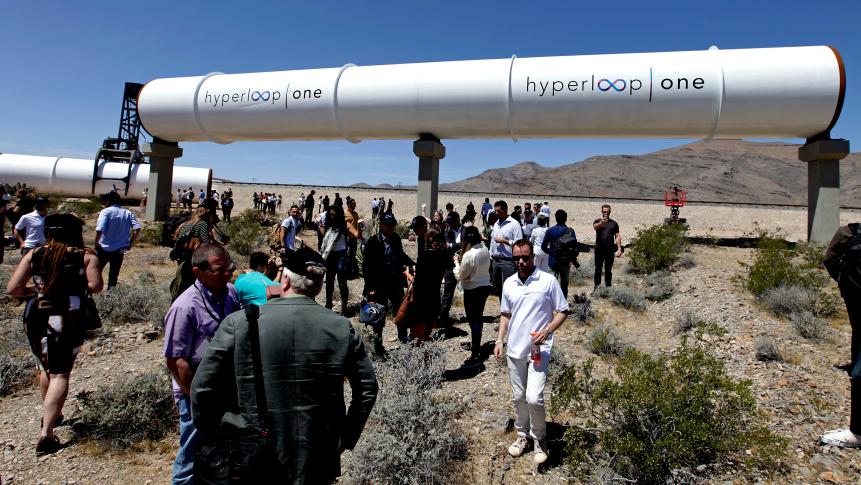
GettyImages/JOHN GURZINSKI
Hyperloop tubes will be mounted on quake-resistant pylons standing up to 100 feet (30 meters) high that can run alongside recognized highway routes wherever possible - in California's case, along Interstate 5.
The tubes and pods will be powered by motors and batteries developed by Tesla and solar panels on the tube's outer surface. Forward motion and deceleration are handled by a linear induction motor – a flat electric motor ideal for creating movement in a straight line.
Musk's idea would compete with air travel but at a fraction of the cost by offering tickets for the journey at around $20 for a one-way journey.
The potential benefits of Hyperloop are that it is rapid, cheap, and environmentally friendly. Musk says the pods themselves will be comfortable and safe, traveling one at a time and spaced 23 miles (37 km) apart. Each one will be fitted with multiple emergency braking sytems.
Musk's own companies are not developing the technology associated with Hyperloop alone. Instead, he has created separate industrial partnerships to deliver systems and routes across the world, as well as annual competitions involving international student teams since 2015 to design and build the best high-speed pod.
His mass-transport enterprise The Boring Company meanwhile provides support for the competitions and is involved in creating sub-surface transportation tunnels and Hyperloop tubes.
There are two startup business consortiums handling the concept for worldwide development. Hyperloop One is a partnership with Richard Branson that ran its own competitive tenders to plan Hyperloop routes in Canada, India, Mexico, and the UK. Its US routes include Chicago to Pittsburgh and Cheyenne via Denver, to Pueblo in Colorado.
Its competitor is the part-crowdfunded Hyperloop Transportation Technologies. Agreements to develop Hyperloop routes in China, Indonesia, South Korea, France, and the Czech Republic have been signed and the company announced the construction of what will likely be the world's first commercial system from Abu Dhabi to Dubai in the UAE starting in 2019.
The idea of city-to-city high-speed trains was popularised by the Japanese more than 50 years ago with the introduction of the Shinkansen train system. Bullet trains as they are known entered into operation in 1964 in time for the Olympic Games with the Tokkaido Shinkansen line. The fastest lines today reach speeds up to 200 mph (320 kph).
Next-generation maglev trains will connect the Tokyo to Osaka Chuo Shinkansen route of around 310 miles (499 km) in 67 minutes at a top speed of 311 mph (501 kph). The Japan Railway Company says the maglev train will improve people's lives and the country's economy and it is planning a line with US authorities to link Washington DC and New York.
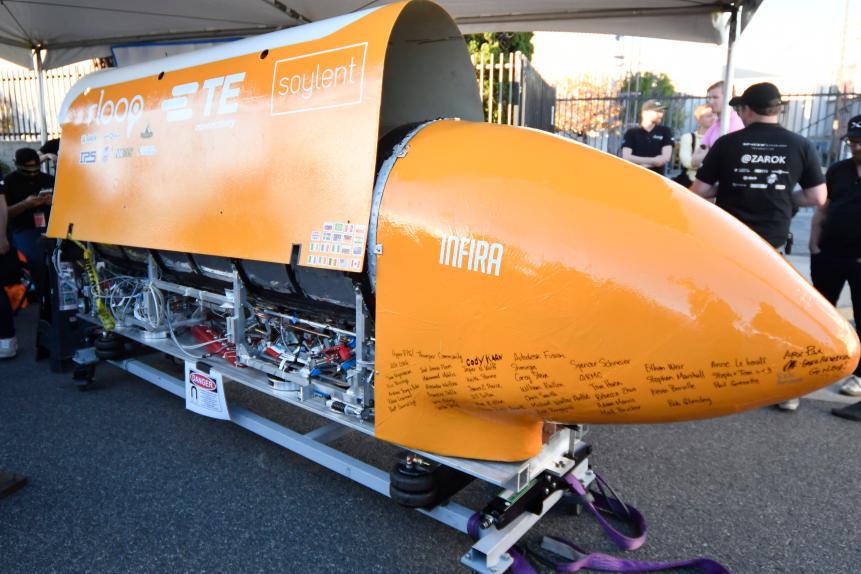
GettyImages/AFP
Plans drawn up by the California High-Speed Rail Authority for the route between Los Angeles and San Francisco proposed a train traveling at 200 mph (322 kph) for a cost in excess of $60 billion. Musk labeled this as too expensive for a bullet train that would be "one of the slowest in the world" and said the price for a Hyperloop connection would be $6 billion - a figure critics say is likely unachievable.
Similarities between the propulsion of maglev trains and Hyperloop are trumped by the promised higher speeds of Musk's system. But the idea itself is obviously adapted from available technologies and older concepts including the 'vactrain' concept from 1914 and a paper from the RAND Corporation think tank for a Very High-Speed Transit (VHST) system in 1972. Its description of vacuum tubes, electromagnetic waves, and out-competing air travel are similar.
Hyperloop itself is still experimenting to find the best available pod technology. An entrant to the Space X Hyperloop Pod Competition 2019 managed to hit a top speed of 288 mph (463 kph) on the company's test track. The team from the Technical University of Munich completed its winning test run despite losing part of its pod in the process.
Future competitions are planned and the technology is likely to have long-term implications including the potential development of a planetary network of 'vactrains'. The ET3 Global Alliance is an American consortium devoted to establishing evacuated tube transport technologies (ET3) using maglev principles. Highest projected speeds are hypersonic at around 4,000 mph (6,500 kph) and would allow passenger or cargo travel between Beijing and New York in two hours. ET3 has patents for its idea and founder Daryl Oster calls the system "space travel on Earth".
The future transport prospects for linking cities using maglev-like technologies are bright, whatever the future for the individual companies. Its promise as an environmentally friendly, ultra-fast and potentially inexpensive way to travel could enable our lives and our planet to be transformed.










